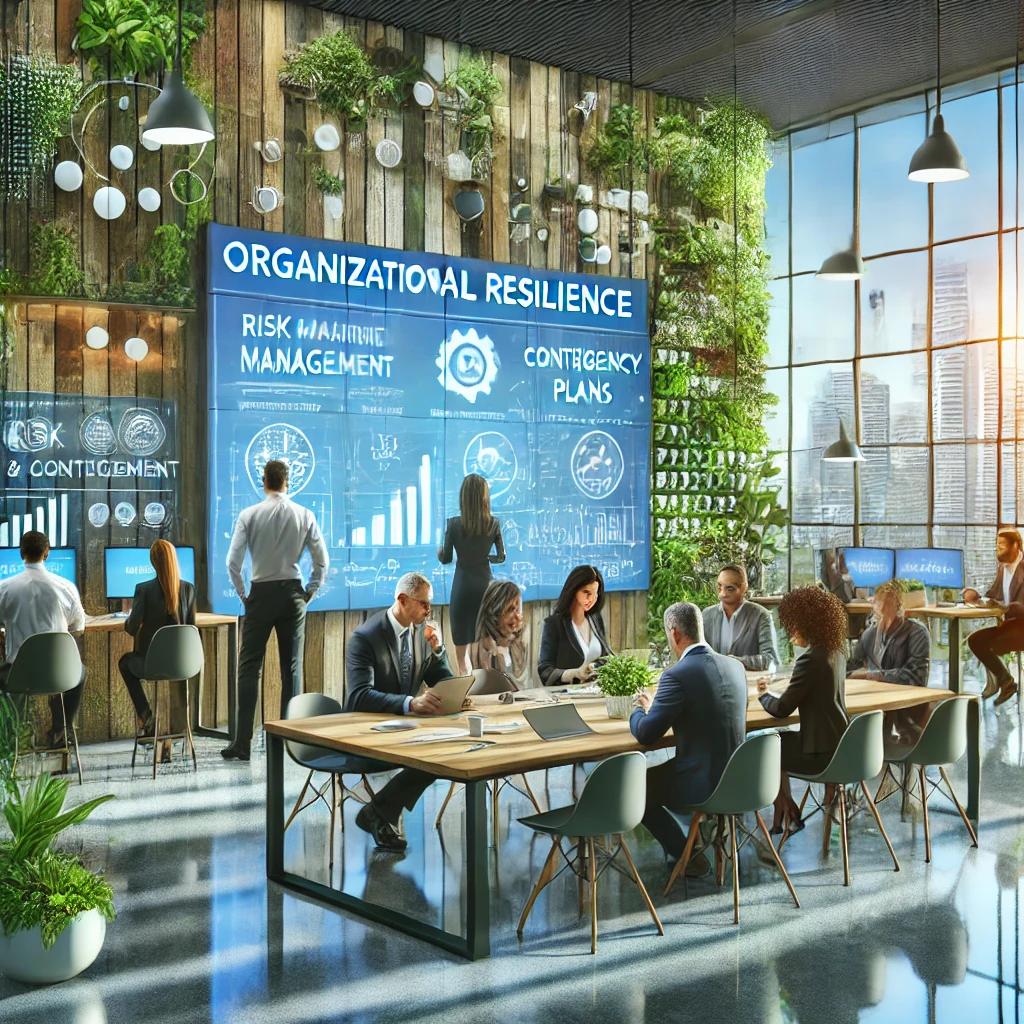Organizational Resilience and Transformation

7/13/2024
Introduction
In today’s business landscape, characterized by rapid change and frequent disruption, organizational resilience and the ability to transform are essential for long-term success.
Organizational Resilience refers to a company’s ability to anticipate, prepare for, respond to, and adapt to adverse events. This ensures business continuity and operational stability.
Organizational Transformation is the process of fundamentally changing the way a company operates, aimed at improving its effectiveness, efficiency, and innovation. Driven by technological advances and market changes, this transformation requires process restructuring and new strategies.
Although distinct, resilience and transformation are interdependent. Resilience creates a solid foundation that allows the organization to quickly withstand and adapt to the changes required for transformation. At the same time, continuous transformation strengthens organizational resilience, creating a cycle of adaptation and growth. Together, these capabilities enable businesses to not only resist change, but thrive in the midst of it.
Dimensions of Resilience
- Financial Resilience: Maintain financial stability during crises with capital buffers and risk management.
- Operational Resilience: Adapt processes and maintain continuity of operations.
- Technology Resilience: Adopt new technologies quickly to maintain competitive advantage.
- Cultural Resilience: Valuing adaptability, innovation, and collaboration.
- Leadership Resilience: Leaders who guide the organization with a clear vision and strategic plan.
Benefits of Resilience
- Ability to Weather Crises: Minimize disruptions and maintain business continuity.
- Rapid Adaptation: Seize new opportunities and mitigate emerging risks.
- Long-Term Sustainability: Sustaining continued growth and success.
Structuring Resilience for Transformations
To realize continuous and effective transformations, adopt structured approaches that promote resilience and adaptability:
- Continuously assess operational, financial, and technological risks.
- Optimize processes and maintain improvement mechanisms.
- Utilize emerging technologies for automation.
- Foster a culture of adaptability and innovation.
- Develop and test business continuity plans.
The Role of Leadership
Well-prepared leaders foster a resilient organizational culture and support continuous transformation. They must:
- Encourage a growth mindset.
- Maintain effective communication.
- Make agile decisions.
- Empower teams.
- Drive the company’s vision and goals.
Success Stories
Amazon: Continuous innovation, customer centricity, and agile adaptation.
Microsoft: Adaptive leadership, product diversification, and cultural transformation.
Salesforce: Innovation, cultural resilience, and commitment to sustainability.
Conclusion
Organizational resilience and effective transformation are essential for businesses to thrive in an ever-evolving business environment. By applying the strategies and lessons discussed in this article, your organization will be better positioned to weather the uncertainties of the future and thrive in a competitive global marketplace.
For those who wish to delve even deeper into this topic, we offer a complete ebook that explores in detail all aspects of organizational resilience and transformation. Download the ebook for free here and discover how to strengthen your organization to meet challenges and seize opportunities continuously and effectively.
Bibliography
1. McKinsey & Company:
- “Building Organizational Resilience” (https://www.mckinsey.com/business-functions/risk-and-resilience/our-insights/building-organizational-resilience)
- “Foster Organizational Resilience for a Stronger 2023” (https://www.mckinsey.com/business-functions/risk-and-resilience/our-insights/foster-organizational-resilience-for-a-stronger-2023)
- “All Change: The New Era of Perpetual Organizational Upheaval” (https://www.mckinsey.com/business-functions/risk-and-resilience/our-insights/all-change-the-new-era-of-perpetual-organizational-upheaval)
- “Successful Transformations” (https://www.mckinsey.com/business-functions/risk-and-resilience/our-insights/successful-transformations)
2. Boston Consulting Group (BCG):
- “Operational Resilience is Key to Thrive in Disruptive Times” (https://www.bcg.com/publications/2020/operational-resilience-is-key-to-thrive-in-disruptive-times)
- “How CEOs Can Beat the Transformation Odds” (https://www.bcg.com/publications/2021/how-ceos-can-beat-the-transformation-odds)
- “Five Truths and a Lie About Corporate Transformation” (https://www.bcg.com/publications/2019/five-truths-and-lie-about-corporate-transformation)
3. Deloitte:
- “How Firms Can Become More Resilient in the New Normal” (https://knowledge.wharton.upenn.edu/article/firms-can-become-resilient-new-normal/)
4. Harvard Business Review:
- “Transformations That Work” (https://hbr.org/2020/10/transformations-that-work)
- “Middle Managers Should Drive Your Business Transformation” (https://hbr.org/2021/02/middle-managers-should-drive-your-business-transformation)
5. Other Sources:
- Ross, Jeanne W., Weill, Peter, and Robertson, David. “Enterprise Architecture as Strategy: Creating a Foundation for Business Execution.” Harvard Business Review Press.
- Kotter, John P. “Leading Change.” Harvard Business Review Press.
- Collins, Jim. “Good to Great: Why Some Companies Make the Leap… and Others Don’t.” HarperBusiness.